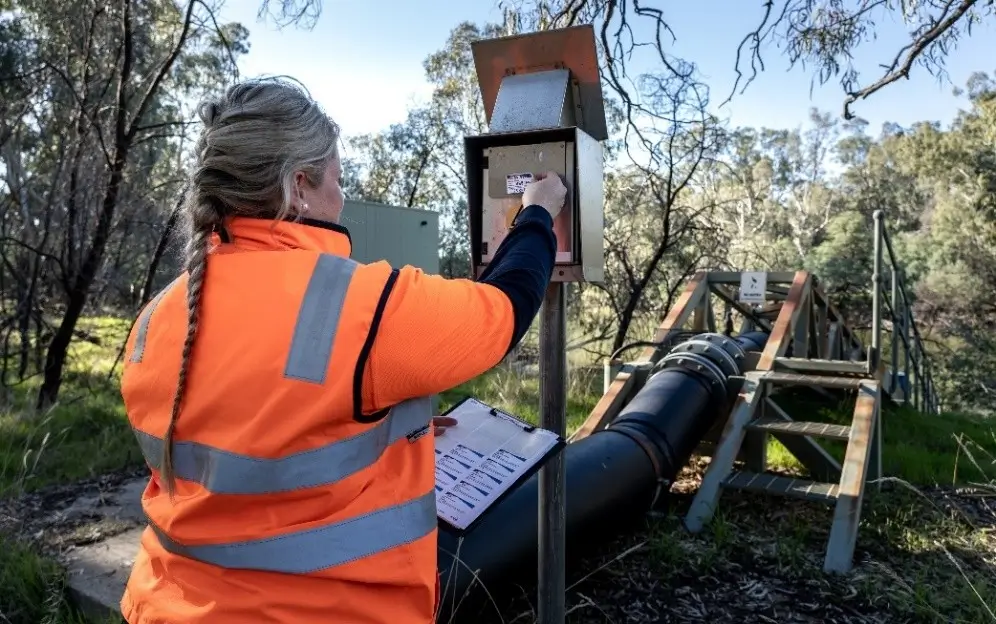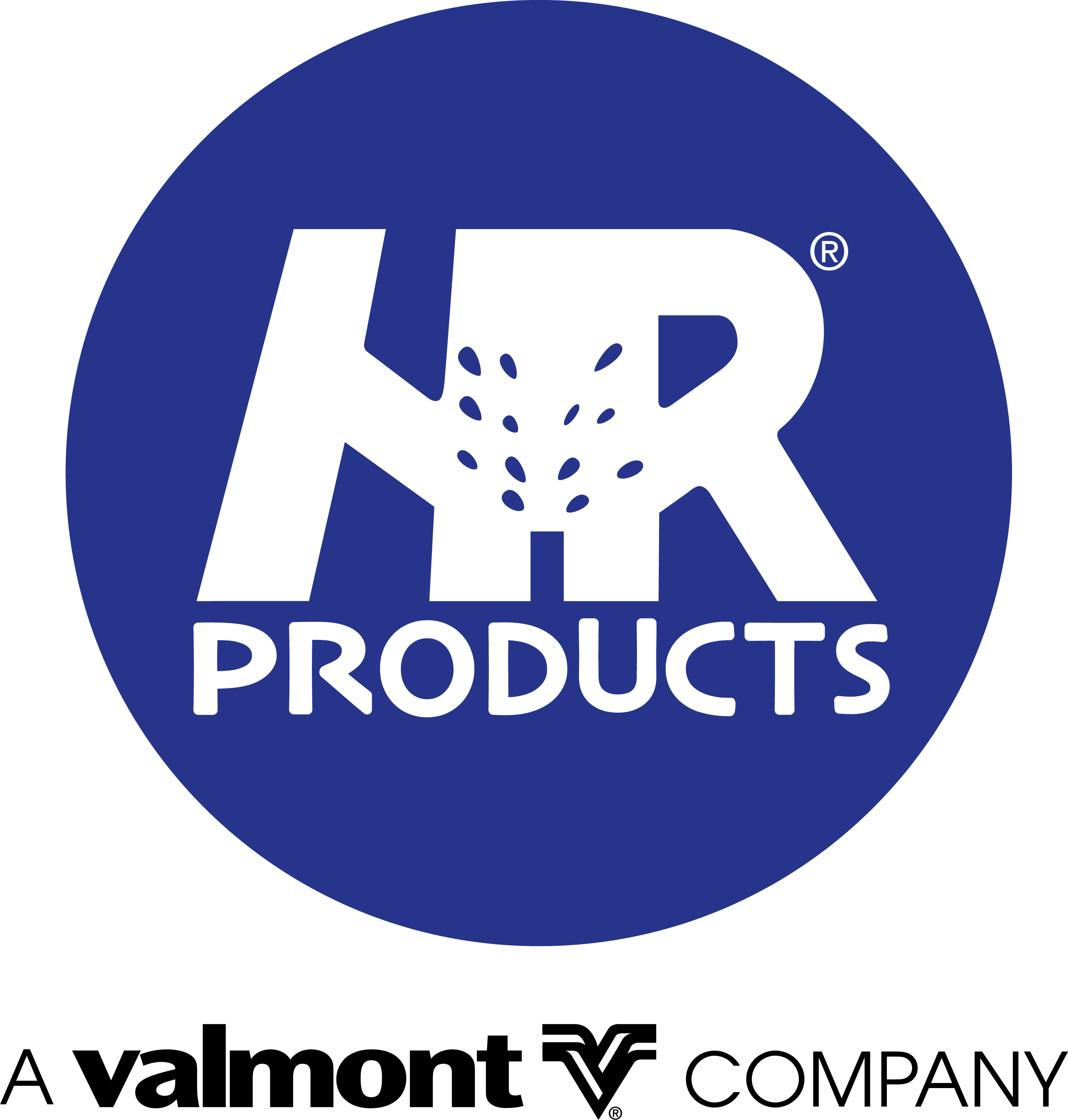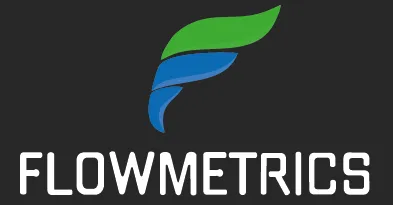Approved Meters & Meter Policy
Framework and Regulation
A strong new metering framework to improve the standard and coverage of non-urban water meters across Australia under the Water Reform Action Plan is now in place under the Australian Standard 4747. The framework will be implemented, in each State, through a staged roll-out over five years.
Irrigation Australia Limited offers approved training courses to meet increased demand for certified meter installers. For report about each of the state’s interim standards that align with the AS4747 click on the links below.
Downloads
For a Current List of Pattern Approved Non Urban Water Meters
For Pattern Approved Metering Requirements for the Murray Darling Basin States
State Information
We're happpy to assist with any enquiries — complete the online form to reach the team at Irrigation Australia.
Online Enquiries
State & Territory Policies
New South Wales
Metering reform
Over recent years, the NSW Government has undertaken substantial reforms in water management, driven by key recommendations from independent reviews such as the Matthews’ Review and the Murray-Darling Basin Compliance Compact. In response, the NSW Water Reform Action Plan was developed with clear targets to strengthen and enhance water management across the state.
A cornerstone achievement of the Action Plan is the commencement of a robust new metering framework that applies across the State, to implement the “no meter no pump” policy.
Since 2018, NSW has required accurate, tamper-proof meters to measure water taken from rivers, creeks, and groundwater. This metering framework is essential for building public trust, reducing overuse, increasing water availability downstream, and supporting environmental needs.
Metering review and upcoming changes
However, challenges have delayed full compliance with the metering rules. To speed up the reform, a review was held in 2023–2024, and proposed changes are now open for public feedback. Amendments to the Water Management (General) Regulation 2018 are expected in early 2025, with current rules remaining in place until then.
An online information session covering the review recommendations was held on Thursday, 12 September 2024. You can watch the recording here.
Other review documents include:
- Factsheet: A clear path to water meter compliance in NSW
- Recommendations report: Review of the NSW non-urban metering framework (August 2024)
You can find out more on how the review will impact other works here.
Stay updated on changes to the metering rules
To stay updated as the NSW Review recommendations are implemented, sign up for metering related news.
You can also sign up to the department's monthly newsletter to stay informed and have your say about water planning, management and reform across NSW or read the previous editions.
If you need help registering or have any questions you can phone the department on: 1300 081 047 or email: wtareenquiries@dpic.nsw.giv.au
To participate in upcoming metering webinars or to have your say on public exhibitions, visit the NSW Government website.
IMPORTANT: NSW water users with surface water pumps of 500mm or larger must install compliant metering equipment immediately, unless exempt.
Inland water users with entitlements of 100ML or more must also comply now.
Interactive metering guidance tool
To check the rules as they stand, use the departments Metering Guidance Tool.
The Gwydir Valley Irrigators Association created a video to guide water users through the NSW metering tool, helping determine if a meter or telemetry is needed. It also shows how to find a duly qualified person nearby who can provide expert advice on meter selection and handle the installation.
Understanding the roles of the NSW Water Agencies
There are 3 key water agencies in NSW that make, implement and enforce the metering rules:
1. NSW Department of Climate Change, Energy, Environment and Water (DCCEEW) – Water Group - makes the rules
The DCCEEW Water Group develops the state’s water laws and policies, including water sharing, resource plans and metering rules. It also grants licences and approvals for large water users.
if you have questions regarding the metering rules, you can contact the metering and measurement team at: metering.reform@dpic.nsw.gov.au
2. WaterNSW - implements the rules
WaterNSW, a state-owned corporation, manages dams supplying water across NSW. It issues licences and approvals for rural landholders, industries and non-major developments and implements the metering rules through licencing and data systems such as the DQP Portal, Data Aquisition Server (DAS, and iWAS.
Book a meeting with the DQP Concierge:
WaterNSW DQP Concierge Program is here to assist DQPs by providing support and step-by-step guidance through the process of site commissioning and validation.
They will be reaching out to DQPs soon to discuss their situation. In the meantime, if you'd like to connect earlier, you can schedule a meeting at a time that works best for you.
Schedule a meeting.
you can also contact WaterNSW at:
- online non-urban meter enquiries
- online floodplain harvesting metering enquiries
The general WaterNSW customer helpline is: 1300 662 077
3. Natural Resource Access Regulator (NRAR) - enforces the rules
NRAR enforces the NSW water laws to ensure fair water use for the environment, communities, and industries. it regulates compliance with water extraction limits, metering, water management works and activities on waterfront land.
Read NRAR's: Metering regulations compliance approach fact sheet.
If you have any questions regarding enforcement of the metering rules, you can contact NRAR at:
phone: 1800 633 362
email: nrar.enquiries@nrar.nsw.gov.au
DQP Portal
The DQP Portal (Portal) is a web-based tool hosted and administered by WaterNSW. It is a key tool for DQPs operating in NSW as it allows DQPs to:
- ensure LIDs are properly configured and linked to the correct water licensing information
- submit documentation confirming that metering equipment has been properly installed on behalf of their client
- record the steps taken to order, install and validate metering equipment for their client.
DQP Portal Improvements
The DQP Portal went through a major redesign in mid-2023 to simplify the process for DQPs to register and validate sites.
The new structure combines all tasks into a single form with 2 Quality Assurance (QA) checkpoints. These hold points allow WaterNSW staff to work together with the DQP to ensure accuracy before progressing, reducing admin time for DQPs and delivering better outcomes for customers.
The new high-level process steps are:
1. Register the meter site for compliance
2. QA Review (Hold Point 1): WaterNSW reviews the registration
3. Register the LID.
4. Install equipment on site.
5. Commission and validate the site.
6. QA Review (Hold Point 2): WaterNSW reviews the validation.
7. Send the validation certificate to the customer.
For more information on the process steps, see How-to guide - DQP Portal
For other DQP resources, visit the DQP assistance webpage
Remember: Upload your validation certificate to go towards your CDP Points
When you validate a site, an email will be sent from the DQP portal to the license holder, with a copy to the CMI, confirming the validation process is complete. This email can be used as evidence for CPD points and uploaded to "My CPD Points" on the IAL website.
quick STEPS - LID Installation and the DQP Portal. This infographic provides all the information you need to understand the steps in a summarised format.
DQP Portal Resources
WaterNSW continually improve the Portal and have developed a suite of notes training materials for DQPs.
DQP improvements release notes
- Release notes 31/10/2024
- Release Notes 20/06/2024
- Release Notes 18/04/2024
- Release Notes 01/12/2023
- Release Notes 02/11/2023
- Release Notes 28/08/2023
Registers and portals
How-to guides and work instructions
- How-to guide - DQP portal
- How-to guide - Multi-meter to single LID
- Metering portable pumps - a guide to installing metering on portable pumps
- Data acquisition service (DAS) water user guide
- How-to use the NSW Water Register - YouTube video
- Floodplain harvesting gauge board checklist
Other helpful resources
- DQP portal frequently asked questions (FAQs)
- Maintenance specifications PDF, 147.15 KB
- Metering guidance tool
- List of pattern-approved meters (MDBA)
- In-situ meter accuracy procedures guide
- Faulty metering equipment factsheet
- WaterNSW – faulty meter forms
Get in touch with WaterNSW
Book a meeting with the DQP Concierge:
WaterNSW DQP Concierge Program is here to assist DQPs by providing support and step-by-step guidance through the process of site commissioning and validation.
They will be reaching out to DQPs soon to discuss their situation. In the meantime, if you'd like to connect earlier, you can schedule a meeting at a time that works best for you.
Schedule a meeting.
you can also contact WaterNSW at:
The general WaterNSW customer helpline is: 1300 662 077
Pattern Approved Meters and Local Intelligence Devices
Meters installed on or after 1 April 2019 must be pattern-approved.
The Commonwealth National Measurement Institute is responsible for providing pattern-approval of meters. The Commonwealth Department of Climate Change, Energy, Environment and Water maintains a list of pattern-approved non-urban water meters on the Non-urban water metering framework and guidelines webpage.
Click here to find a link to the latest pattern approved non-urban meters
A local intelligence device (LID) securely records water usage from a pattern-approved meter and provides the data to the NSW Government through telemetry transmission or on-site download.
The DCCEEW -Water Group maintains a list of LIDs that meet the NSW Government’s data acquisition system requirements, as per the 2021 Data Logging and Telemetry Specifications.
- Data Logging and Telemetry Specifications (2021) PDF, 1900.85 KB
- Data Acquisition Service Logged Data Format Guidelines (2020) PDF, 246.73 KB
Click here to find the list of approved Local Intelligence devices
Checking telemetry connection before you go in the field
Local intelligence device (LIDs) require Telstra service for recording data. .
The government offers a mobile coverage tool to help identify coverage in NSW for metered telemetry. This tool helps meter installers decide whether telemetry is suitable.
Use the to explore telemetry options for specific works.
For questions about the non-urban metering framework please email: metering.reform@dpie.nsw.gov.au
Understanding work approvals
Getting the correct meter and pump information is crucial for water data to be reported accurately and for the associated charges to your customer to be minimised.
A water supply work approval (WSWA) allows the holder to build and use a water supply work, like a pump, dam, or bore, at a specific location. A water use approval lets the holder use water for a purpose, like irrigation, at a designated location. Usually, a water supply work approval is used along with a water access licence (WAL). Approval holders must make sure their works match their approval. To understand more about WSWAs and how to make changes, visit WaterNSW website.
It's important as a DQP that you select the correct Extractions Site Identification (ESID) for registering metering equipment.
The following resources can help you locate ESIDs on the NSW Water Register:
- Understanding how to read a work approval
- How-to use the NSW Water register - YouTube video
- NSW Water register
- How-to guide - DQP Portal
Can a water user make a site inactive if they are not using it?
If water users are not currently using a work to take licensed water, they might consider applying to make it inactive. This would exempt them from metering requirements. This fact sheet explains how and why to make a work inactive. Marking a work as inactive does not mean giving it up. Water users can reactivate it later, but they should apply with enough lead time, as standard processing times will apply. Also, if a work has not been constructed, it does not need to be made inactive.
Resources to help you navigate work approvals
The Gwydir Valley Irrigators Association have developed the following videos to help water users navigate the approval process and how to make changes:
Works Approvals and Why They Are Important - Click HERE to watch
Making administrative changes to your work approval. Click HERE to watch.
Other useful documents & links:
- In-situ meter accuracy procedures guide – July 2022 (PDF, 1753.71 KB)
- Non-urban water meters conforming to AS4747 (Cth DCCEEW Revised July 2024)
- Frequently asked questions – Duly Qualified Persons – December 2021 (PDF, 194.47 KB)
- Telemetry exemption notification form – Clause 233 – Non-urban metering – December 2021 (PDF, 201.43 KB)
- Data Acquisition Service Logged Data Format Guidelines – June 2020 (PDF, 246.73 KB)
- Glossary of Terms – Non-urban water metering policy – June 2020 (PDF, 180.43 KB)
- A best-practice guide to installing, validating and maintaining non-urban water meters in NSW – July 2019 (PDF, 887.48 KB)
- Market engagement policy for metering and telemetry – March 2021 (PDF, 593.52 KB)
- NSW Government Gazette 23 No. 164 – Data logging and telemetry specifications 2021 (PDF, 1900.85 KB)
- Maintenance Specifications 2019 – under the Water Management (General) Regulation 2018PDF, 147.15 KB
- Frequently asked questions – Non-urban water metering – April 2023 (PDF, 275.09 KB)
- Exemption from the mandatory metering equipment condition – Application form – February 2022 (PDF, 497.61 KB)
- NRAR – Metering regulations – Compliance approach – April 2022 (PDF, 272.7 KB)
- Non-urban water metering in NSW – What water users need to know – July 2022 (PDF, 2459.1 KB)
- Clause 233 mandatory metering exemption applications fact sheet – July 2022 (PDF, 141.35 KB)
- Non-urban water metering: conditions for water supply works – October 2022 (PDF, 279.84 KB)
- At-risk groundwater sources (WaterNSW) – September 2021
- Exemption Instrument – Non-urban metering telemetry requirements – December 2021 (PDF, 249.47 KB)
- Industry Guide – Works Requiring a Meter – June 2020 (PDF, 499.43 KB)
- NSW Non-urban metering policy – November 2020 (PDF, 648.4 KB)
If you have any questions related to policy documents and the rules, please contact the Metering and Measurement team at: metering.reform@dpie.nsw.gov.au
South Australia
The South Australian Government’s is committed to the accurate metering of, and accounting for, licensed water use in prescribed areas of the State. This is important for the long-term sustainable management of South Australia’s precious water resources – to support industry, agriculture, communities and ecosystems.
Metering information and resources for meter installers and validators
The South Australian Licensed Water Use Meter Specification: ↗ Validators must ensure that, when filling out a validation certificate, that meters are installed in accordance with this Specification.
Validation certificates: ↗ Validators must ensure that following a validation, a validation certificate is accurately completed and submitted to the Department within 28 days.
South Australian Licensed Water Use Meter Specification User Guide ↗
Metering information and resources for water license holders
Metering requirements in South Australia ↗
Lodge a meter notification form: ↗ To be completed when a meter is replaced, removed, repaired, relocated, validated or tested.
Contact Details |
Prescribed Water Resources managed by this office |
Adelaide |
McLaren Vale, Central Adelaide, Northern Adelaide Plains, Western Mount Lofty Ranges, Far North |
Berri |
River Murray, Angas Bremer, Eastern Mount Lofty Ranges, Mallee, Marne Saunders, Peake Roby and Sherlock, Clare Valley, Barossa Valley, Eyre Peninsula |
Mount Gambier |
Tatiara, Padthaway, Lower Limestone Coast, Tintinara-Coonalpyn and Morambro Creek and Nyroca Channel prescribed watercourse |
Victoria
Non-urban water metering is essential for comprehensive water accounting, sustainable water management and enabling compliance with the Victorian Water Act 1989.
Victoria has a zero-tolerance approach to unauthorised take ↗ and is committed to the effective measurement of non-urban water use.
Victoria’s policy for non-urban water metering
Victoria’s Non-urban Water Metering Policy ↗, aims to encourage comprehensive and accurate measurement of non-urban water use. Victoria’s metering policy details the following accuracy and measurement targets:
- Existing and new metering sites should be fitted with meters that conform with AS4747 standard
- All metered water take must be telemetered, where benefits outweigh costs
- Manual meter reading may be retained where telemetry is not viable
Responsibility for non-urban meters in Victoria
In Victoria, water corporations with rural customers own, maintain and read meters. Water corporations are responsible for making decisions about whether a meter is needed and for selecting metering and telemetry devices. Victoria’s Non-urban Water Metering Policy ↗ guides water corporations in making these decisions.
Reporting on non-urban water implementation in Victoria
Victoria publishes an annual non-urban metering implementation report on metering reform. These reports meet Victoria’s continuing obligation to monitor and report on Victoria’s progress in implementing non-urban water metering.
All previous metering implementation reports are available and can be found via Victorian Non-urban water metering reports ↗.

Water corporation field officer manually reading a non-urban water meter and telemetry device in northern Victoria. © State of Victoria, DEECA. Credit: Darryl Whitaker.
Western Australia
Requirements for metering water use are set out under the Rights in Water and Irrigation Regulations 2000.
The requirements are being introduced over a five-year period and apply to licences:
- with an entitlement of 500 000 kL or more from 31 March 2018
- to all licences with an annual water entitlement from 10 000 kL by 31 December 2020.
The regulations set out requirements for:
- installing and maintaining meters
- providing meter details and regular meter readings to the department.
Update the above to the below extracted from the WA Govt Website
Under our policy on water metering and measurement ↗, licensees are required to measure, record and report their water take to us. Measurement of water taking can be done using meters or through a range of other methods, including water level gauges in dams.
As a licensee, measuring the water you take helps:
- you understand your water usage to make the most of your entitlements and reduce your overall costs
- us understand how much water is being used and the impact of licensed abstraction on our important water resources
- us to make informed decisions about fair and sustainable access to our water resources
- you as the licensee to determine your water use and effectiveness of your water saving measures.
For more information please contact our regional offices ↗. If you are in the South West region, please contact the Bunbury office.
Australian Capital Territory (ACT)
In the ACT metering has been required for all licensed water take since the introduction of water resources legislation in 1998. The ACT Government’s Non-Urban Water Metering Policy supports improved metering standards by outlining clear and practical criteria to guide implementation. It focuses on:
a. New and replacement meters – requiring the use of pattern-approved meters and validation of installations by certified meter installers;
b. Existing meters – allowing the continued use under grandfathering arrangements, provided their accuracy can be reliably demonstrated; and
c. All meters – supporting ongoing maintenance and testing, along with strengthened reporting and notification requirements for Licence holders.
The Environment Protection Authority (EPA) ensures water users comply with licensing, metering, and reporting requirements under the Water Resources Act 2007. The EPA uses inspections and enforcement actions where necessary. These efforts align with national commitments to improve water management and transparency across the Murray–Darling Basin.
A link to the water licensing information Water licensing and access entitlement - Access Canberra
Please contact Access Canberra on 13 22 81 or email environment.protection@act.gov.au for more information.
Tasmania
Tasmanian Standard for Non‐Urban Water Meters
This Standard pertains to the specification, installation, validation and maintenance of non‐ urban water meters in Tasmania. This Standard is to be read in conjunction with the Australian Standard (AS 4747).
Northern Territory
NT Non-Urban Water Metering Code of Practice for Water Extraction Licences
The measurement of water take is an integral part of the administration and regulation of water usage. It underpins the water allocation planning process through which water resources are sustainably managed to meet water use demands and maintain healthy aquatic environments.
Reading your water meter
A water meter should provide accurate data on the volume of water being pumped from the resource (groundwater or waterway).











